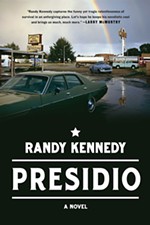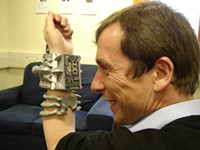Crying: The Natural and Cultural History of Tears
Reviewed by Sidney Moody, Fri., Nov. 26, 1999

Crying: The Natural and Cultural History of Tears
by Tom LutzNorton, 356 pp., $25.95
Tom Lutz has managed to stuff hundreds of factoids about crying into Crying: The Natural and Cultural History of Tears -- everything from a hilarious explanation, circa 1579, of the brain being the source of tears ("when the brain is compressed it ejects great quantities of tears"), to a paragraph on the topic of Bill Clinton's crocodile tears. In fact, brain compression is precisely the effect of reading Crying, though Lutz's factoids, contrary to the 1579 theory, don't cause the reader to manifest Squirt-Gun Eyes. One does, however, feel glimmers of an illumination about the mysterious topic of shedding tears that never comes to pass.
Many of the passages revolve around the Woman Are From Venus, Men Are From Mars axis (the author, to his credit, never actually quotes from that book), providing examples from various cultures where woman are expected to cry and men aren't, and vice versa depending of the circumstances. For example, Jackie O. doesn't cry at JFK's funeral, but Bob Dole cries at Nixon's funeral, and both are thought to be appropriate responses based upon a shifting set of cultural expectations.
According to Lutz, a trend that has emerged in the past few years is that men have been given permission to cry in certain situations as long as they don't overdo it. From Rambo to Schwartzkoff, these macho stereotypes now shed tears as evidence of their manliness and humanness. The man who can't cry is no longer a cultural ideal. Several pages are devoted to the John Waters film Crybaby, with its depictions of various characters crying and rituals associated with crying (collecting tears in a mason jar), culminating with a tattooed teardrop on Johnny Depp's cheek as a sort of symbol for this concept.
Unfortunately, the author doesn't provide a Unified Field Theory about the phenomenon of crying that could link that whole kit and caboodle together, even with all the factoids that have been etched in the reader's brain.










